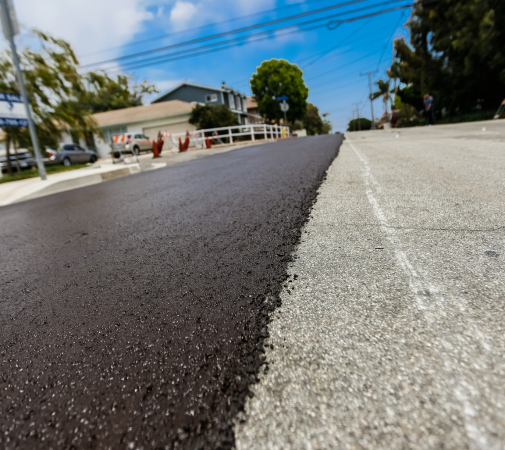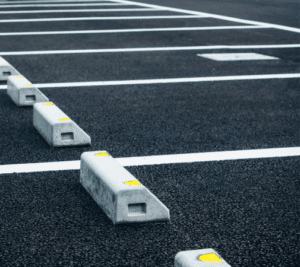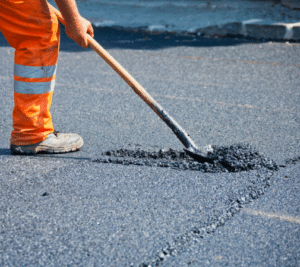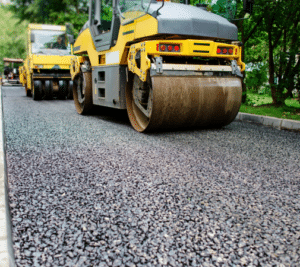Introduction
Slurry seal is a cost-effective pavement maintenance technique that plays a vital role in preserving and extending the lifespan of pavements. It involves the application of a mixture of asphalt emulsion, aggregate, water, and additives to the existing pavement surface.
The primary purpose of slurry seal is to protect the pavement from the damaging effects of weather, traffic, and aging. It acts as a protective layer that seals the surface, preventing water penetration and minimizing the potential for cracking and deterioration. Additionally, it enhances the appearance of the pavement by providing a smooth and uniform texture.
Maintaining pavements is of utmost importance to ensure their longevity and optimal performance. Regular maintenance interventions, such as slurry seal applications, help prevent the need for costly repairs and costly reconstruction in the future. By proactively addressing minor issues, such as cracks and surface defects, through slurry seal, the overall lifespan of the pavement can be significantly extended.
Furthermore, slurry seal can improve skid resistance, reducing the risk of accidents and enhancing road safety. The smooth surface created by the application of slurry seal also reduces noise generated by vehicle traffic, contributing to a more pleasant and comfortable driving experience.
In conclusion, slurry seal is a crucial investment in the long-term protection and sustainability of pavement assets. Its cost-effectiveness and ability to extend the lifespan of pavements make it an essential component of a comprehensive pavement maintenance program.
Understanding Slurry Seal
Slurry seal is a cost-effective pavement maintenance technique that consists of various components. It primarily includes aggregate, which is a mixture of small-sized stones, sand, and fine materials. The aggregate provides strength and increases the durability of the pavement. Another vital component is asphalt emulsion, which serves as the binder. This gooey liquid helps hold the aggregate particles together and provides a waterproof layer to the pavement. Fillers, such as finely graded sand or mineral fillers, are added to improve the mix’s stability and enhance its overall performance.
When applying slurry seal, the mixture is prepared in a specialized machine and then spread evenly across the pavement surface using a squeegee or a spreader box. The slurry seal cures rapidly, allowing the roadway to be reopened to traffic relatively quickly.
Compared to other pavement maintenance techniques like sealcoating and chip sealing, slurry seal offers several advantages. Sealcoating primarily involves the application of a protective layer on the surface of the pavement, while chip sealing involves the placement of aggregate chips on a sprayed asphalt emulsion. Slurry seal, on the other hand, incorporates both the aggregate and the asphalt emulsion in a uniform mixture, resulting in a more durable and longer-lasting solution. Slurry seal also provides improved skid resistance, enhances the appearance of the pavement, seals cracks, and helps extend its lifespan. Additionally, slurry seal can be customized to meet specific requirements, making it a versatile choice for maintaining various pavement surfaces. Overall, the cost-effectiveness and long-term protection provided by slurry seal make it a prudent investment for the sustainability of pavement assets.

The Economic Benefits of Applying Slurry Seal
- Cost Savings Over Time
Slurry seal, when applied to pavement surfaces, offers significant cost savings over time by extending the lifespan of the pavement and reducing long-term repair costs.
One of the primary benefits of slurry seal is its ability to act as a protective barrier against the damaging effects of weather, UV rays, and traffic loads. By sealing cracks and preventing water intrusion, it prevents further deterioration of the pavement structure, thereby prolonging its life.
In addition, slurry seal effectively seals minor cracks and surface defects, restoring the pavement’s smoothness and enhancing its skid resistance. This contributes to improved driving conditions and safety, reducing the likelihood of accidents and related repair costs.
The cost-effectiveness of slurry seal lies in its ability to address pavement issues before they escalate into more significant problems. Investing in a timely application of slurry seal is far more economical than undertaking major rehabilitation or reconstruction projects.
Furthermore, the cost of slurry seal application is relatively low when compared to other pavement preservation techniques. Its quick application process minimizes road closures and disruption to traffic, resulting in savings in labor and traffic management costs.
Ultimately, the use of slurry seal as a proactive maintenance strategy leads to substantial long-term cost savings for infrastructure owners, as it extends the life of their pavement assets while minimizing the need for costly repairs and replacements.
- Minimized Disruption
Slurry seal is known for its quick application and curing times, which result in minimized disruptions to access compared to more extensive repairs. This cost-effective pavement preservation technique can be applied swiftly, allowing for the prompt reopening of roads and parking lots to traffic.
Unlike other pavement repair methods that may require long periods of access closure, slurry seal has shorter curing times. It typically takes just a few hours for the slurry seal to dry and cure, allowing for a quicker return to regular use. This reduced downtime means less disruption for motorists, businesses, and nearby residents.
By minimizing disruptions, slurry seal saves time and money for both public and private entities responsible for maintaining pavement assets. Access can be restored promptly, preventing unnecessary traffic congestion, detours, and inconvenience to the community.
Moreover, the decreased downtime associated with slurry seal also leads to fewer delays in completing projects. This allows for expedited completion of multiple pavement maintenance activities within a given timeframe, enhancing overall efficiency and reducing costs.
In summary, the quick application and curing times of slurry seal lead to minimized disruptions, offering a practical solution for maintaining pavement assets without causing prolonged access closures or inconveniences to users.
- Sustainability Aspect
Slurry seal is widely recognized as a sustainable pavement preservation technique due to its ability to utilize fewer raw materials and preserve existing pavement. This cost-effective solution contributes significantly to the long-term sustainability of pavement assets.
One of the key ways in which slurry seal promotes sustainability is through its use of fewer raw materials. Unlike other pavement treatments that require substantial amounts of new materials, slurry seal involves a mixture of aggregate, asphalt emulsion, and water. The minimal use of new materials means fewer natural resources are consumed, reducing the environmental impact.
Furthermore, slurry seal is designed to preserve and extend the life of existing pavement, rather than requiring complete reconstruction. By sealing surface cracks and preventing water penetration, it protects the underlying pavement structure from deterioration. This preservation approach ensures that the existing infrastructure is fully utilized, minimizing the need for costly and resource-intensive reconstruction projects.
By choosing slurry seal, governments, organizations, and individuals can contribute to the overall sustainability of their pavement assets. The reduced consumption of raw materials and the preservation of existing pavement not only result in cost savings but also help reduce environmental impacts. With its innovative and sustainable approach, slurry seal is undoubtedly a prudent investment for the long-term protection and sustainability of pavement assets.
Assessing the Right Time for Slurry Seal Application
Assessing the right time for slurry seal application plays a crucial role in maximizing the effectiveness and cost-efficiency of this pavement treatment. To determine the optimal timing, pavement condition assessment is essential. This assessment involves evaluating various factors such as the extent of surface distresses like cracking and raveling, as well as the overall pavement condition.
By conducting a thorough assessment, pavement managers can identify the appropriate time to apply slurry seal. Applying it when the existing pavement condition is still relatively good can prevent further deterioration and prolong the service life of the pavement. On the other hand, applying slurry seal to severely distressed pavement may not provide significant benefits and could lead to premature failure.
Proper timing is key because it ensures that the slurry seal treatment can effectively seal existing surface cracks and protect the underlying pavement from further damage. Applying slurry seal too early or too late may result in inadequate crack sealing or insufficient pavement protection, respectively.
By carefully considering the timing for slurry seal application, pavement managers can make a prudent investment for the long-term protection and sustainability of their pavement assets. This cost-effective solution can help extend pavement life, reduce the need for more expensive rehabilitation treatments, and ultimately save money in the long run.
Slurry Seal vs. Other Pavement Maintenance Options
Slurry seal is a pavement maintenance option that offers a cost-effective solution for the protection and sustainability of pavement assets. When compared to alternatives like asphalt overlay, microsurfacing, and full pavement replacement, slurry seal stands out as a highly viable option.
In terms of cost, slurry seal is significantly more affordable than other maintenance options. Asphalt overlay and full pavement replacement require extensive material and labor costs, making them expensive choices. Microsurfacing also incurs higher costs due to the use of higher-quality materials.
However, cost-effectiveness is not the only advantage of slurry seal. It also provides a longer lifespan for pavement assets. While microsurfacing offers moderate longevity, slurry seal can provide 5 to 7 years of protection. Additionally, slurry seal’s performance is commendable as it improves skid resistance, seals cracks, and minimizes surface deterioration.
The choice of pavement maintenance strategy depends on various factors such as traffic levels, existing pavement condition, and budget constraints. Slurry seal is ideal for low to moderate traffic areas and pavements with minor distresses. It is an excellent option for budget-conscious entities as it offers cost savings without compromising long-term pavement integrity.
Overall, slurry seal emerges as a prudent investment for the long-term protection and sustainability of pavement assets when compared to alternatives like asphalt overlay, microsurfacing, and full pavement replacement. Its cost-effectiveness, longevity, and performance make it an attractive option for pavement maintenance.
Conclusion
In conclusion, slurry seal has proven to be a highly cost-effective solution for long-term pavement protection. By applying a thin protective layer to the surface of the pavement, slurry seal helps to prevent damage from the elements, reduce the need for costly repairs, and extend the lifespan of the pavement.
When used as part of a comprehensive pavement maintenance plan, slurry seal can significantly lower overall maintenance costs and ensure the sustainability of pavement assets. It serves as a proactive measure to address small cracks and imperfections before they escalate into major issues requiring extensive repairs or even pavement replacement.
Furthermore, the cost-effectiveness of slurry seal is evident not only in terms of maintenance savings but also in terms of the economic and environmental benefits it provides. By preserving the integrity of the pavement, slurry seal minimizes the need for resource-intensive repair processes, reduces traffic disruptions, and decreases the overall carbon footprint associated with pavement maintenance.
Considering these factors, it is highly encouraged for property owners, municipalities, and transportation agencies to include slurry seal in their pavement maintenance plans. This proactive approach will not only save costs in the long run but also ensure the long-lasting protection and sustainability of their pavement assets.



